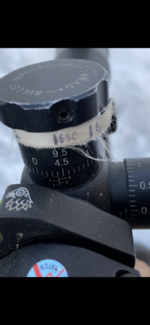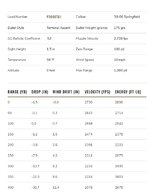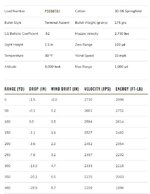I have 2 Leupold CDS scopes and I can't seem to commit to getting the custom dials made. I just make drop charts and keep the MOA turret on. I even have one gun that I pretty much exclusively shoot one load in, and I still haven't gotten around to getting a dial made for that.
My question is for those that switched from charts to custom dials. Was it a "game changer"? Is it worth it to be able to "range and dial" instead of "range, check chart, and dial"?
For reference, I'm talking about hunting situation inside 600 yards.
Thanks for you thoughts!
My question is for those that switched from charts to custom dials. Was it a "game changer"? Is it worth it to be able to "range and dial" instead of "range, check chart, and dial"?
For reference, I'm talking about hunting situation inside 600 yards.
Thanks for you thoughts!



